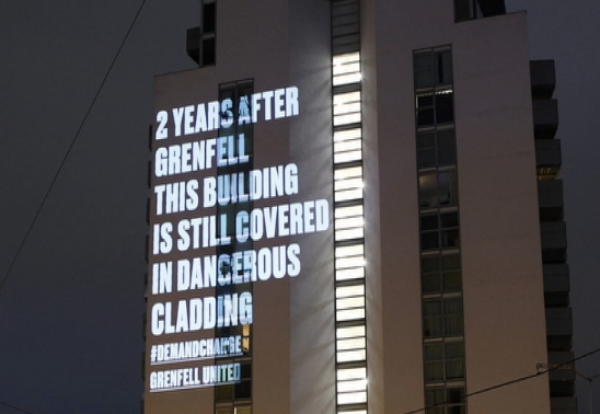Just 105 private and public buildings over 18m have completed remediation works from the 433 identified to have been fitted by unsafe aluminium cladding.
Slow progress and lack of ambition to make buildings more resistant to fire has been thrown into the spotlight by Grenfell campaigners who have projected warnings on tower blocks in London, Manchester and Newcastle.
Also industry fire protection chiefs have warned that even the Government’s fresh planned changes to building regulations don’t go far enough.
Jonathan O’Neill, managing director, Fire Protection Association, said he wanted to see a total ban on combustible building materials on all high-risk buildings, such as schools, hospitals, nursing homes, blocks of flats – not just those buildings over 18m.
“We also want a ban on single staircases in all tall buildings, because in the event of a fire you need at least one staircase for people to be able to evacuate the building, and a second staircase for the fire and rescue services for entry,” he said.
There is also growing concern about the performance of other cladding materials like high-pressure laminates.
It is estimated that a further 340 high rises are clad with these sort of materials. Last month the Government commissioned the FPA to carry out tests on HPLs.
328 buildings to be remediated (progress)
- 102 are social sector residential buildings; (81 started)
- 163 are private sector residential buildings; (17 started)
- 27 are student accommodation buildings; (4 started)
- 29 are hotels: (3 started)
- 7 are publicly owned buildings, all health buildings (2 started)
Also in May, the government committed to fund the remediation of high-rise private sector residential buildings with ACM but funding guidance criteria will not be published until July.
So far the government has placed a ban on combustible materials on new high-rise homes, which came into force on 21 December with a two-month transitional period.
Last week the government published consultation on recommendations set out in the Hackitt Review for a new safety regime for designing and building high-rise homes.

